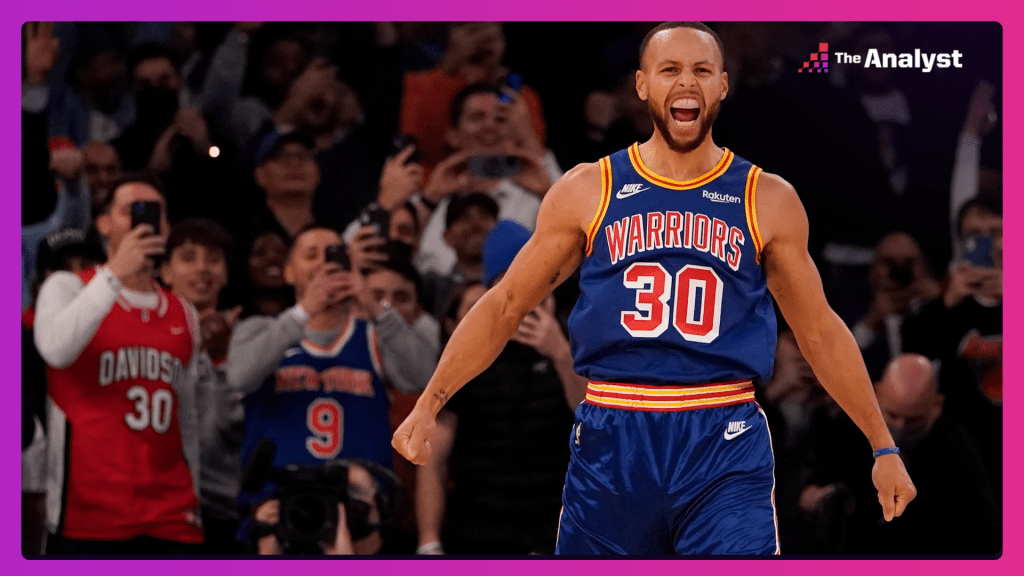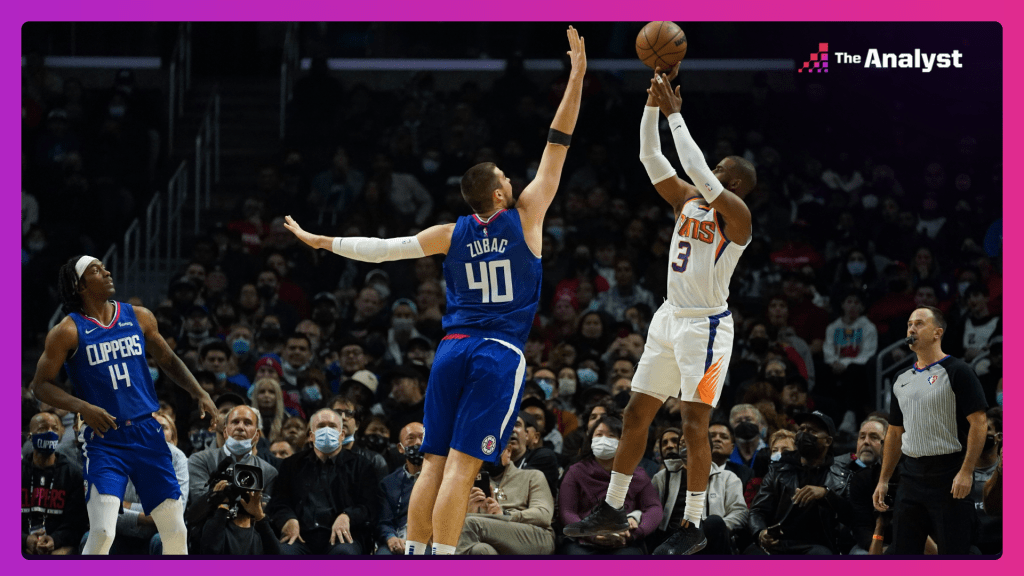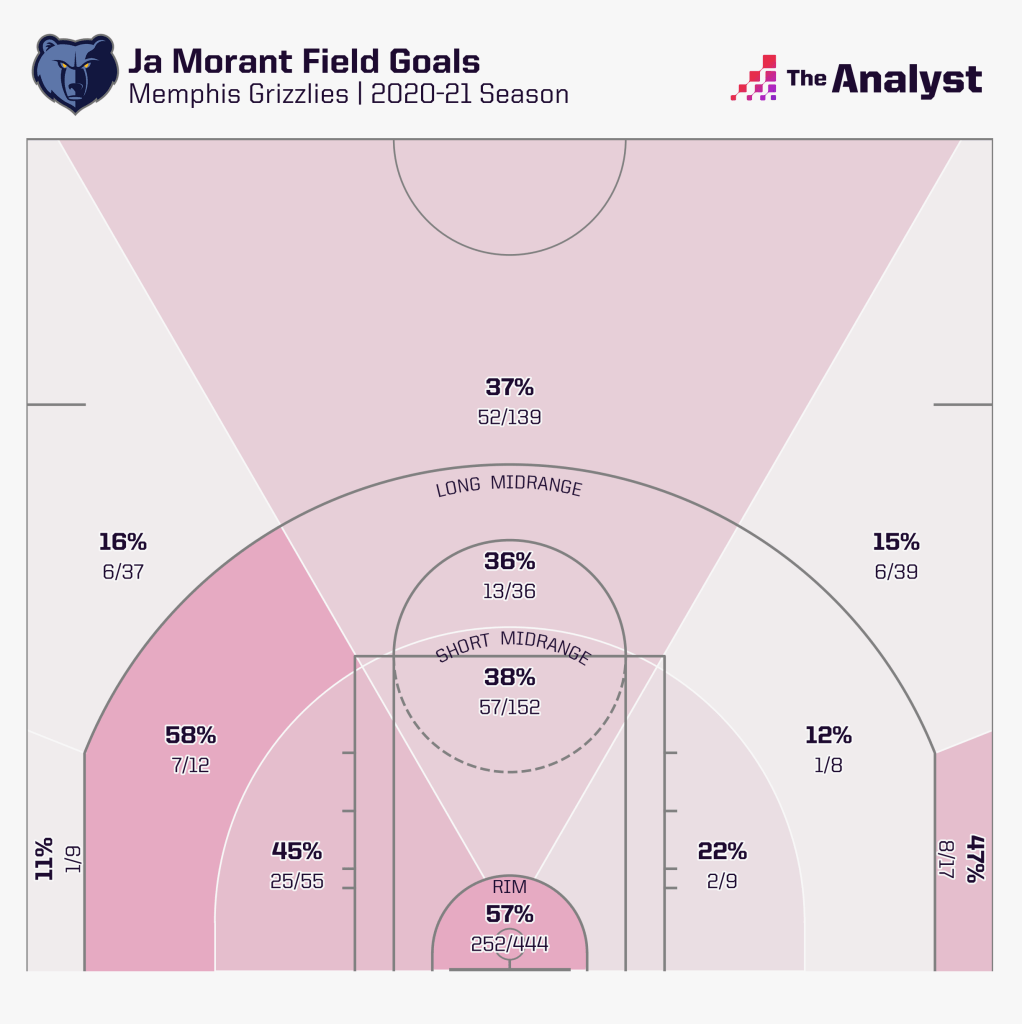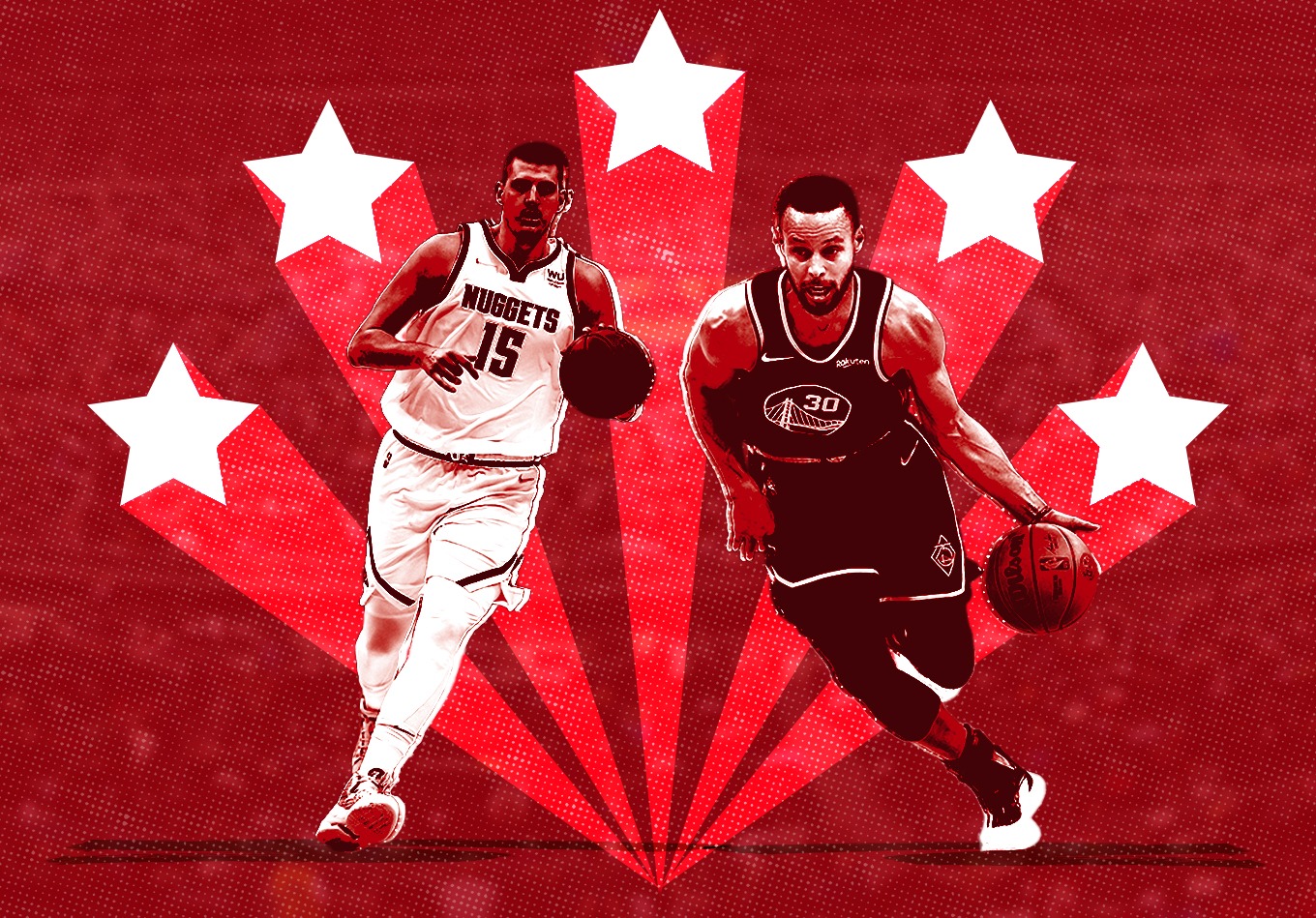Last week, as we near the halfway point of the first half, we picked the 12 Eastern Conference players who should earn an all-expenses paid trip to Cleveland in the middle of winter.
And only two of them immediately wound up in health and safety protocols, joining another one who was already there.
Picking 12 All-Stars in the East wasn’t easy. Some of last season’s shoe-ins, like Jayson Tatum, Bradley Beal and Julius Randle, haven’t been as good or as efficient. Others, like Kyrie Irving and Ben Simmons, haven’t played at all. I’m not even sure Rick Carlisle thinks Domantas Sabonis is one of the 12 best players on the Indiana Pacers, yet he wound up making our squad of potential future Team LeBronners.
Is the picture clearer as we move out West? Yes and no. There’s probably more name recognition and star power overall – 10 of the names below either were voted to play in the All-Star Game last season or were named as injury replacements – but most of them haven’t been as good as they were a year ago.
Picking the West is about finding a balance between offensive numbers and defensive prowess; about toeing the line between efficiency and someone who’s simply being grandfathered in. It’s about trying to decide if Mikal Bridges and Draymond Green, who are both going to be first team All-Defensive selections in the months to come, should be in an All-Star Game despite routinely scoring in single digits.
Read on to find out if they made the cut, but we’ll start with one of the easiest picks in years.
Backcourt Starters
Stephen Curry, Golden State Warriors
Do we even need to explain this one? The NBA’s new 3-point king has helped the Warriors make the league’s biggest splash even as he waits for the other half of his aptly nicknamed backcourt brotherhood to return. Steph is shooting a career-low 43.1% from the field, but he’s the MVP through two months. A career-high 66.4% of his field goal attempts are from 3, and even if he hasn’t been quite as deadly accurate as in previous seasons, the attention he allows has helped Golden State open things up. The Warriors are shooting a league-best 64.7% in the restricted ahead – even as Curry himself struggles finishing at the rim. They have a plus-16.2 net rating when he’s on the floor and just a plus-1.9 rating when he’s off.

Curry leads the league in DRIP, our projection of a player’s plus/minus contribution to his team per 100 possessions, and he’s plus-1.1 in DELTA, the difference in DRIP from our preseason ratings and a number that far outclasses his fellow MVP contenders. The Warriors have the best defense in the league and they’re better defensively when he’s on the court than when he’s not – something that wasn’t the case during last season’s play-in appearance. Put it this way: Curry is averaging 1.33 points per shot attempt, which is in the 92.9th percentile of guards in the league. He was also at the top in that category in 2020-21. There’s almost certainly positive regression coming for a guy who’s already one of the best to ever do it.
Donovan Mitchell, Utah Jazz
This is not an easy spot to pick. Normally it feels like there are too many candidates to fill only two spots in the West backcourt, but this season it’s tough to parse who actually deserves to make it alongside Steph as a starter. Picking between Devin Booker and Chris Paul in the same backcourt is a tall task. Luka Doncic was the favorite to win the MVP coming into the season and was expected to make the Dallas Mavericks a title contender, and instead he showed up to training camp carrying the equivalent of two extra Larry O’Brien Trophies in his, um, physique. He’s now out with an ankle injury. Damian Lillard has been a shell of his All-NBA self, struggling to crack 30% from 3 and 40% overall as rumors of his potential discontent with the Trail Blazers continue to pick up steam. Mitchell isn’t a perfect player, and detractors will point to his defensive deficiencies (he’s a negative in defensive box plus/minus, D-DRIP, etc.). But the Jazz are the best offensive team in the league by such a wide margin, and that starts with Mitchell. He’s hovering around 35% from 3, but he’s shooting career best percentages at the rim (64.9%) and in midrange (47.4%). Could he be more efficient? Absolutely, but he has the playmaking ability to take over a game when he needs to, and he’s doing it for a team that’s been better than any in the league over the past month. Mitchell’s an All-Star one way or another, and with the less-than-impressive field around him, we’ll pencil him in to start.
Frontcourt Starters
Nikola Jokic, Denver Nuggets
The no-brainer of no-brainers. Jokic had a historically good MVP campaign last season and he’s followed it up by being even better as he tries to keep this broken-down Nuggets team afloat. Denver is plus-12.6 per 100 possessions when he’s on the court and minus-15.7 when he isn’t, easily the biggest disparity in the league. Jokic was 11th all time in Basketball Reference’s win share per 48 minutes last season (.301) and he’s ahead of it in 2021-22 (.312), also leading the league in offensive box plus/minus (plus-9.8) and defensive box plus/minus(!) (plus-4.8).
Nikola Jokic Statistical Ranks
| Statistic | Number | League Rank | Discrepancy |
|---|---|---|---|
| Value Above Replacement Player (VORP) | 3.0 | 1st | 0.5 above 2nd |
| Box Plus/Minus | 14.6 | 1st | 4.9 above 2nd |
| DRIP | 6.0 | 2nd | 0.8 behind 1st |
| Estimated Plus/Minus | 10.1 | 1st | 1.9 above 2nd |
| PER | 34.52 | 1st | 4.06 above 2nd |
| RAPTOR | 13.8 | 1st | 5.3 above 2nd |
| FiveThirtyEight WAR | 6.2 | 1st | 0.9 above 2nd |
He’s shooting 76.1% from the restricted area and 52.9% from midrange, both improvements over last season. Everyone started to come over to the “he’s at least passable defensively” side of the coin a year ago, and in 2021-22 he’s been fantastic on that end. Jokic is tied for the league lead in contested 2-pointers after finishing 29th in that category last season. He’s seventh in the West in D-DRIP (plus-1.5) and should be right up there with Curry and Giannis Antetokounmpo among the MVP contenders come April.
LeBron James, Los Angeles Lakers
James has only played in 16 of the Lakers’ 28 games, but for our purposes here we’ll assume he plays most of the rest of the first half. Los Angeles certainly better hope he does, because this team is a mish-mash of ill-fitting parts that James absolutely had a hand in signing off on. But we’re not here to litigate the Russell Westbrook trade. James has dialed back the usage a bit with Westbrook around, but he’s actually shooting a bit more and once again hovering around 60.0% true shooting. His midrange numbers are better even if his 3-point percentage has, and that’s a good thing as just 42.4% of his points are coming from in the paint – his lowest rate since his rookie season. James has been more active defensively than he has in years, as his steal percentage is higher than it’s been since his second year in the league. The Lakers are 7-2 when he scores more than 25 points and they’re 8-11 when he doesn’t or when he sits. James is well into the back nine of a career that’s left the G.O.A.T. up for debate, but he’s still playing at an elite level when he’s in uniform. Also, he’ll tie Kobe Bryant for the second most All-Star selections at 18 this season and the game’s in Cleveland, so he kinda has to be there!
Rudy Gobert, Utah Jazz
Patrick Beverley might not agree, but Gobert has been one of the three best frontcourt players in the West thus far. After winning three Defensive Player of the Year awards in the last four seasons, Gobert has been his usual fabulous self at that end once again. He leads the NBA in defensive DRIP (plus-3.0) and has five 20-rebound games while the rest of the league has combined for 10. On the other end, he’s shooting 76.0% at the rim – a career high. It’s definitely not all defense for Rudy, but in a game that is at its best when there’s a little friendly intensity at that end, Gobert is a welcome addition – and he deserves to be a starter.
Backcourt Reserves
Chris Paul, Phoenix Suns
The league leader in assists helped carry the Suns to the Finals last season, and he was at the heart of their 18-game winning streak in the first half of this one – aka no-loss November. Paul isn’t even trying to take shots at the rim anymore – he’s 7 for 12 on the season in the restricted area – but his midrange game is as fine as ever. Paul is shooting 52.9% from midrange – third best in the league of the 16 players to attempt at least 4.0 per game. He’s already had four five-steal games, equaling the total he had over the previous three seasons.

Paul is shooting just 36.4% on wide-open 3s and 33.3% overall from beyond the arc, numbers that seem likely to go up as the season progresses – he hit nearly 50% on those wide-open looks last season, for instance. If LeBron is drafting again, you better believe he’s grabbing his boy to throw him some lobs in Cleveland.
Luka Doncic, Dallas Mavericks
Welcome to the “he’s here by default” portion of the column. It’s hard to ignore a guy who’s averaging 25/8/8, and Luka is shooting an impressive 71.0% at the rim. But his midrange game has fallen apart, he’s getting to the line at a 25% lower rate – and hitting under 70% once he’s there – and he’s shooting 32.6% from 3 on more than eight attempts per game. Did we mention he leads the league in usage rate and, perhaps not surprisingly, has a career-high turnover percentage (16.2)? The Mavericks are minus-5.5 points per 100 possessions when he’s on the floor. All that being said … are there really 12 better players in the Western Conference than Doncic? We could make a pretty significant argument that someone like Mike Conley is having a greater impact this season, but there has to be some sort of balance between so-called counting stats and efficiency/impact on winning. This is a poorly constructed roster that’s adjusting to a new coach and lacks anything resembling consistently good second or third options. Assuming his ankle is healthy enough for him to return soon, we’ll reluctantly put Doncic on the roster.
Frontcourt Reserves
Paul George, Los Angeles Clippers
Speaking of players who are having to shoulder quite a load, we present George. He’s shot worse from 3 than Doncic on more attempts, and like Luka, his team is slightly better statistically when he’s not on the court. But he remains an impactful defender even if not at the level he once was, and he’s fifth in DRIP among West players (plus-4.0). However, his DELTA (minus-0.5) shows that he hasn’t lived up to preseason expectations. There’s no doubt George has struggled a bit with his shot, but he’s one of five players – along with Jokic, Giannis, Luka and Kevin Durant – who is averaging 25 points, seven boards and five assists. He’s getting to the line more than last season, and if a few more 3s go down and he can turn some more of his midrange looks into finishes at the rim, George should be primed for improvement. He’s an All-Star even if it’s been an up-and-down beginning of the season.
Anthony Davis, Los Angeles Lakers
Davis added some muscle in the offseason and his game looks a lot different all of a sudden. He took 4.8 shots per game inside the restricted area last season, converting better than 75%, and he’s now taking 7.8 at the rim – more than he did total in 2020-21 in 11 fewer games – without a drop-off in his field-goal percentage.

The downside? His midrange field-goal percentage has taken a dip and he’s basically become incapable of hitting a 3 after at least occasionally experiencing a deep shooting stroke over the past few years. Is this more traditional big version of Davis the best for the Lakers? Probably not, but that’s what was going to happen as soon as Westbrook headed to Hollywood.
Karl-Anthony Towns, Minnesota Timberwolves
Karl-Anthony Towns is never going to be Joel Embiid despite Anthony Edwards’ pleas, but he’s an offensive star who should not be third on the Timberwolves in field-goal attempts like he is on many nights behind Edwards and D’Angelo Russell. Towns has dialed back the 3-point attempts to 5.7 per game after peaking at 7.9 two seasons ago, but maybe he shouldn’t – he’s hitting 42.3% from beyond the arc. He doesn’t get credit for being good defensively for a Timberwolves team that’s consistently been at the bottom of the league in defensive rating since his arrival, and his advanced numbers there still leave a bit to be desired. But when he, Russell and Edwards have shared the floor this season, Minnesota has a 104.3 defensive rating (as opposed to 122.8 for that trio last season). It’s just one data point that brings two teammates into the equation as well, but the Timberwolves are making strides. Towns needs to decrease his turnovers and Minnesota clearly needs another big, but this two-time All-Star is evolving his game.
Wild Cards
Ja Morant, Memphis Grizzlies
The Grizzlies are minus-4.5 points per 100 possessions with Morant on the floor and plus-9.4 with him either on the bench or, as he’s been since late November, in street clothes with a scary-looking left knee injury. So that’s not really a mark in his favor, but the Grizzlies seemed to figure out how to defend in his absence (they’ve also played a far less-challenging schedule). Morant will likely return at some point around the new year, and when he does he’ll bring one of the most electric bags of tricks in the league with him. Morant is doing almost all of his scoring in the paint, where he attempts 12.9 of his 18.8 field-goal attempts per game. He was tied with Giannis for the league lead in points in the paint at 14.67 per game when he went down. Look at the improvement in the short midrange game – i.e. his signature floater – compared to last season.

Throw in some improved 3-point shooting (35.6% on 4.6 attempts per game – he barely cracked 30% last season) and you have a dynamic athlete who can score at the rim and is at least a threat from 3. Morant’s getting to the line at approximately the same rate, and that figures to go up if he continues his barreling-toward-the-basket ways. He’s averaging 5.6 rebounds despite being just 6-foot-3 and 6.8 assists despite playing a total of just 99 minutes with the Grizzlies’ second-best player this season. Ja improbably carried Memphis out of the play-in and into the playoffs last season. He’s eighth in offensive box plus/minus, and even with his defensive deficiencies, he deserves an All-Star nod.
Devin Booker, Phoenix Suns
The other half of the West’s best backcourt has never been a great 3-point shooter. He hit 32.1% of his attempts in Phoenix’s Finals run, and despite some occasional glimpses of turning it on – going 8 for 10 in the closeout of the Lakers and 7 for 12 in the Game 2 Finals win over the Bucks, for starters – he hasn’t been consistent and hurt the Suns with his struggles as the series with Milwaukee wore on. Booker is hitting 40.3% of his 3s on nearly six attempts per game this season, showing opponents he can do more than just damage in the midrange. It’s come a bit at the expense of getting to the free throw line – his 4.3 attempts per game at the stripe are his fewest since his rookie season – but there should be more driving lines open soon if defenders have to worry about him going nuts from 3. It’d be nice to find a place for Bridges, Conley or San Antonio’s do-everything Dejounte Murray, but for now Booker nabs the last spot on the West roster.
Research support provided by Josiah Sukumaran. Data modeling by Matt Scott. Data visualizations by Peter McKeever and graphic design by Briggs Clinard.
